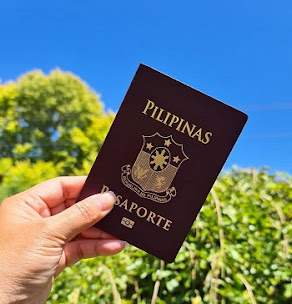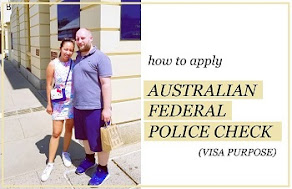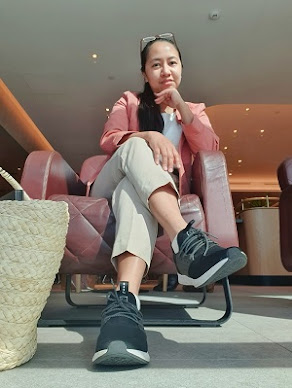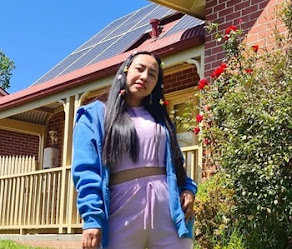 |
| Han Huohuo, one of China’s most influential fashion bloggers. (Sina Weibo/Han Huohuo) |
“So what do you think about the brand?” I asked the extravagantly dressed Chinese girl I had just been introduced to at one of Shanghai’s Fashion Week parties. “No idea,” she replied. ”You know how these things work—I show up, I tweet, they pay me. No one even told me how to pronounce the brand’s name.”
I later discovered she was one of the KOLs (key opinion leaders) invited to attend the event and endorse the brand, a practice that is now essential to any China digital marketing strategy. In fact, as Chinese consumers’ brand discernment increases, so does the demand for significant points of view online. In the spotlight of this phenomenon are KOLs that, under pressure to create quality content, demand more and more meaningful experiences from brands.
Why KOLs matter
In a country where mainstream media is heavily regulated, more and more consumers have turned to social media to find guidance on trends and style. Becoming a so-called “expert” requires no particular background or education in the Chinese internet world; influential power stems from consistent content curation and strong opinions that can stand out from the chatter of the country’s more than 500 million Internet users. This is quite a daunting task, as 40 percent of China’s online shoppers read and post reviews about products—more than double the number in the United States.
Keeping fans loyal is also a great challenge: just as in the offline celebrity world, opinion leaders’ popularity is ephemeral, and it is up to marketers to constantly monitor the web for influential characters whose opinions have tangible commercial impact.
And their efforts work. Recently, French fashion brand Maje sold out a skirt of its latest collection in less than 24 hours because a blogger had posted a photo of herself wearing it on Sina Weibo. A pleasant—and free of charge—surprise, to say the least.
What makes China different
Unfortunately, fortunate coincidences do not happen frequently, and the power of influence usually comes with a price. Or a price list, rather.
Customarily, journalists are offered a standard amount of money—a “red envelope”—in exchange for press coverage. This is a grey but accepted practice that is also applied to the online world, where bloggers have a standard price list that varies depending on factors such as how many fans they have on their blogs. Prices can range from USD$150 for reposting tweets up to USD$5000 for generating original content and endorsing products.
Paying makes influencer engagement a more predictable investment. However, in the online world, it is proving more detrimental than helpful. If treated as a commercial exchange, influencer engagement has slowly lost any kind of “socialness”, the spontaneity and honesty that made these fashion bloggers popular in the first place. In a race to create “buzz”, brands in China forget that to win the hearts of their consumers, they also need to win the hearts of those their consumers are meant to trust and follow.
How to engage the 2014 Chinese blogger
The reality of today’s Chinese consumer is one of sophistication, refinement, and knowledge. Fashion bloggers are even more discerning consumers who seek uniqueness and meaningful experiences to stand out from the crowd. Giving out a red envelope is not enough.
Recently, blogger Peter Xu was invited to participate to a store opening of French fashion brand Sandro in the recently opened Galeries Lafayette in Beijing. To his surprise, this time, he was asked for something different than the usual instruction to “look good in front of a backdrop and repost our tweets”. He was asked to use the new collection to style the event attendees for a photo shoot. Guests were later sent their photo through WeChat and could share it on their own social networks.
This was a simple concept, but one that allowed the guests to feel pampered and special, and the brand to experience tangible results from a store opening: 33 percent of the customers purchased the products after the activity. For once, the KOL felt recognized for his fashion sense and, most importantly, instrumental in bringing results to the brand he supported.
A few key tips
“Red envelopes” for KOL endorsements are not going to end. But the results of influencer engagement are going to be increasingly dissatisfying unless brands provide experiences that are truly meaningful to the designated brand ambassadors, bringing back the “social” into social media. {source: jingdaily}
I later discovered she was one of the KOLs (key opinion leaders) invited to attend the event and endorse the brand, a practice that is now essential to any China digital marketing strategy. In fact, as Chinese consumers’ brand discernment increases, so does the demand for significant points of view online. In the spotlight of this phenomenon are KOLs that, under pressure to create quality content, demand more and more meaningful experiences from brands.
Why KOLs matter
In a country where mainstream media is heavily regulated, more and more consumers have turned to social media to find guidance on trends and style. Becoming a so-called “expert” requires no particular background or education in the Chinese internet world; influential power stems from consistent content curation and strong opinions that can stand out from the chatter of the country’s more than 500 million Internet users. This is quite a daunting task, as 40 percent of China’s online shoppers read and post reviews about products—more than double the number in the United States.
Keeping fans loyal is also a great challenge: just as in the offline celebrity world, opinion leaders’ popularity is ephemeral, and it is up to marketers to constantly monitor the web for influential characters whose opinions have tangible commercial impact.
And their efforts work. Recently, French fashion brand Maje sold out a skirt of its latest collection in less than 24 hours because a blogger had posted a photo of herself wearing it on Sina Weibo. A pleasant—and free of charge—surprise, to say the least.
What makes China different
Unfortunately, fortunate coincidences do not happen frequently, and the power of influence usually comes with a price. Or a price list, rather.
Customarily, journalists are offered a standard amount of money—a “red envelope”—in exchange for press coverage. This is a grey but accepted practice that is also applied to the online world, where bloggers have a standard price list that varies depending on factors such as how many fans they have on their blogs. Prices can range from USD$150 for reposting tweets up to USD$5000 for generating original content and endorsing products.
Paying makes influencer engagement a more predictable investment. However, in the online world, it is proving more detrimental than helpful. If treated as a commercial exchange, influencer engagement has slowly lost any kind of “socialness”, the spontaneity and honesty that made these fashion bloggers popular in the first place. In a race to create “buzz”, brands in China forget that to win the hearts of their consumers, they also need to win the hearts of those their consumers are meant to trust and follow.
How to engage the 2014 Chinese blogger
The reality of today’s Chinese consumer is one of sophistication, refinement, and knowledge. Fashion bloggers are even more discerning consumers who seek uniqueness and meaningful experiences to stand out from the crowd. Giving out a red envelope is not enough.
Recently, blogger Peter Xu was invited to participate to a store opening of French fashion brand Sandro in the recently opened Galeries Lafayette in Beijing. To his surprise, this time, he was asked for something different than the usual instruction to “look good in front of a backdrop and repost our tweets”. He was asked to use the new collection to style the event attendees for a photo shoot. Guests were later sent their photo through WeChat and could share it on their own social networks.
This was a simple concept, but one that allowed the guests to feel pampered and special, and the brand to experience tangible results from a store opening: 33 percent of the customers purchased the products after the activity. For once, the KOL felt recognized for his fashion sense and, most importantly, instrumental in bringing results to the brand he supported.
A few key tips
“Red envelopes” for KOL endorsements are not going to end. But the results of influencer engagement are going to be increasingly dissatisfying unless brands provide experiences that are truly meaningful to the designated brand ambassadors, bringing back the “social” into social media. {source: jingdaily}
























Post a Comment